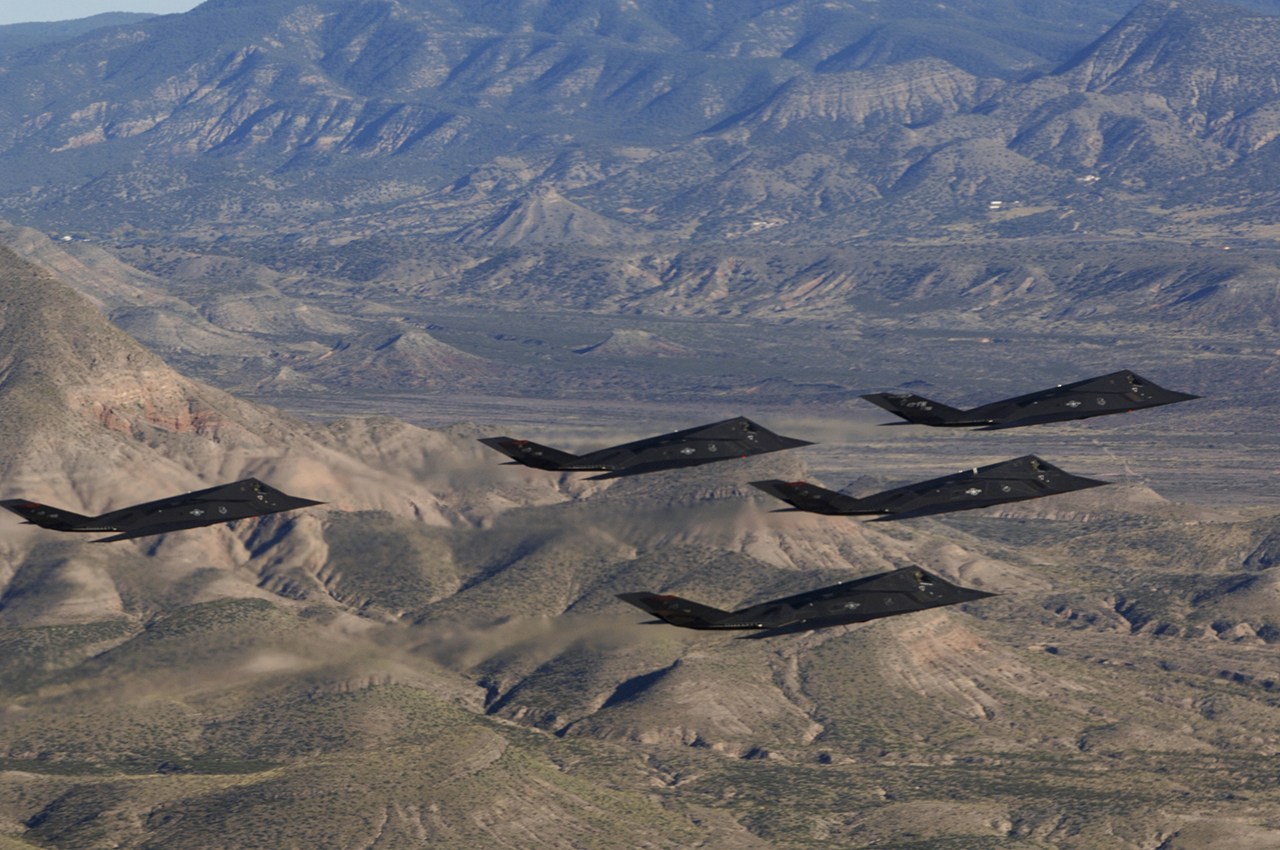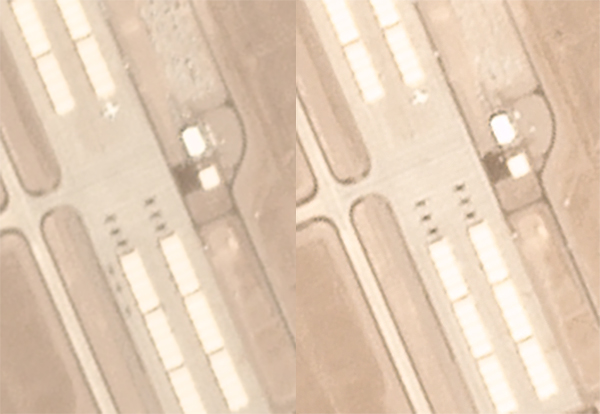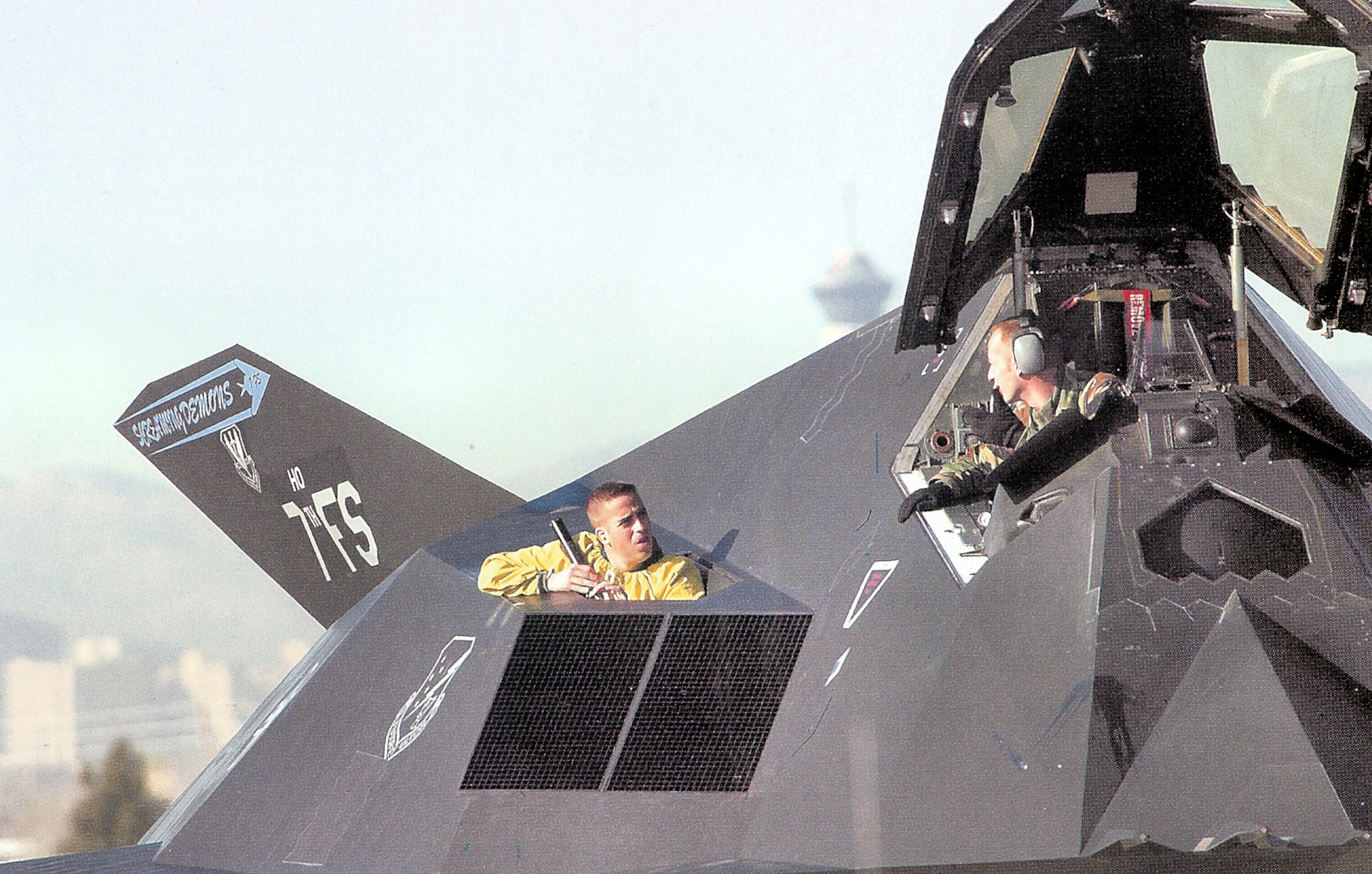The F-117 Nighthawk’s story just gets richer with age. Over the last half-decade, we have seen a consistent expansion of flying operations by the supposedly retired stealth attack jets. Although I have long posited that the F-117s that are still flying would be involved in aggressor operations, the Air Force’s demand for low-observable adversary capabilities has since become clear. Alongside this development, it has become outrightly apparent that these aircraft are in fact providing ‘red air’ support for select exercises and developmental events. Now it appears that their role as aggressors has been expanded in the form of participation in Red Flag, the Air Force’s largest international air warfare exercise held multiple times a year across the sprawling Nevada Test and Training Range, or NTTR, with the central hub of the exercise being Nellis Air Force Base in North Las Vegas.
What we know is that a handful of the roughly four dozen F-117s still stored at Tonopah Test Range Airport (TTR) have continued to take part in research and development efforts, largely in relation to low-observable testing, which includes trialing new radar-absorbent coatings and off-board sensors. They are a central player in what is emerging to be a low-observable integrated testing task force that largely emanates from TTR and includes access to a number of exotic testbed aircraft, sensors, and threat representative systems. But another part of the F-117’s duties has blossomed into a more traditional role.
We were first to report on hard validation of the F-117’s aggressor support mission last December when evidence emerged of F-117s, flying under their now well-known “KNIGHT” callsign and working with 64th Agressor Squadron F-16s, participated in a complex air combat exercise likely related to the prestigious USAF Weapons School. Now, barring some strange coincidence of factors, it seems clear that this mission has migrated to the much larger Red Flag exercise.
Then, in May of 2020, the F-117s did something unprecedented, they flew a number of red air missions out over Pacific against a Navy Carrier Strike Group that was undergoing its most deeply integrated and complex training just prior to deployment. Since then, they have been spotted often over the vast expanses of the Mojave Desert and the NTTR. They even landed at Edwards Air Force Base recently, another first since their retirement a dozen years ago, at least as far as we know. All of this has perpetuated a sense that the F-117s are creeping steadily out of the shadows once again.

As Red Flag 20-3, which you can read all about here, hit its crescendo last week before wrapping-up on Friday, August 14th, a division (four aircraft) of F-117s were spotted intermingled with the 64th Aggressor Squadron’s F-16s, getting fuel from the ‘red air’ tanker and participating in actions downrange. Multiple similar missions are said to have occurred throughout that final week of Red Flag and satellite imagery largely confirms this.
Between Aug. 10 and 14, no less than what appears to be six F-117s appear to have been parked in the open on TTR’s northern ramp. This was a first as far as we know. Usually, no more than two F-117s go about their shy business from the base. These aircraft typically spend a brief time on the ramp and park in their own hangars after their missions are completed. Having six nighthawks consistently on the ramp during the last week of Red Flag seems very similar to the strip alert-like tactics that aggressors of the past have used at the secretive base. Tonopah Test Range Airport was turned into the sprawling installation it is today thanks in part to its use as a clandestine location to fly captured Soviet fighters out of during the twilight of the Cold War. You can learn more about the Red Eagles program and how TTR came to be in this past post of ours. It’s also worth noting that Red Flag increases in complexity to challenge its participants as it wears on, with the most capable threats often saved for the last week or last days of the exercise.

Regardless, the F-117s appear to have staged in force for what would have been an unprecedented tempo of operations, at least since their retirement, in order to support Red Flag evolutions throughout the week. Red Flag includes two sorties per day, one during mid-day and one during the night. It’s also worth noting that by most estimations only four to six F-117s were still in the flying pool. This points to the real possibility that the six jet fleet is a minimum number and more airframes may have been regenerated as the F-117’s flying duties grew.
These latest developments underscore that the secretive F-117 force, which has a direct association with the “Dark Knights” moniker, is very much involved in adversary air support, beyond discreet test and developmental duties. It would make some sense that they are providing a dissimilar, low-observable threat representation for frontline aircrews to contend with, at least until the 65th Aggressor Squadron, which will be outfitted with F-35As, comes online and can assume a similar, albeit more robust role.
Considering that the U.S. no longer has a monopoly on stealth technology, with foreign cruise missiles, fighter aircraft, and even drones being produced with low observable qualities. As a result, new sensors will be hitting the U.S. fighter force very soon that will help detect, track, and engage what radar has trouble seeing. Ever-increasing network connectivity and data fusion will also help in countering stealth threats, but you have to train against them in order to best employ these technologies operationally.
Although the F-117 doesn’t represent the cutting-edge of stealth technology, it does represent a complex foe to contend with, to say the least, and one unlike any fighter pilot or airborne early warning and control radar operator has ever seen before. Considering the edge the U.S. still holds in terms of low-observable technologies, the F-117 is at least a decent stepping stone and stop-gap measure before employing true 5th generation aggressor aircraft.
Paired with electronic warfare and creative tactics, one can imagine just how wily the F-117s could be as part of the greater aggressor force. Far lesser aircraft are used daily in the adversary role in the hands of contractors. How higher-end and lower-end assets are mixed into a potent adversary air plan is what really matters when it comes to stress-testing U.S. and allied fighter aircrews.

All these factors, as well as the need for F-117s to continue to act as a control variable in developmental testing, have led to what appears to be a bizarre renaissance for the once written-off F-117 Nighthawk, even if its shallow resurgence will only be for a limited period of time. Still, an F-117 aggressor gives the Pentagon’s growing adversary air community a highly unique asset to employ against pilots that could very well end up facing off against an enemy stealth asset in actual combat. With their inclusion in this iteration of Red Flag, we may very well be seeing much more of the “Black Jet” in the not so distant future, at least before they finally vanish for good.
Contact the author: Tyler@thedrive.com
